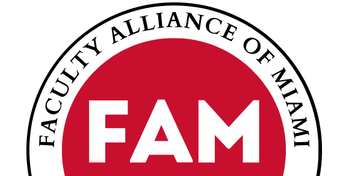Did in-person teaching prove to be as dangerous as some feared? Was it dangerous to keep residence halls open? The CDC has weighed in with a new report on university-related COVID transmission, and the answer, in short, is yes.
The figures are scary:
“Among counties with large colleges and universities…, remote-instruction university counties experienced a 17.9% decline in mean COVID-19 incidence…, and in-person instruction university counties experienced a 56.2% increase in COVID-19 incidence.”
Older people were made more vulnerable by student infection spikes: “Increases in incidence among adults aged ≥60 years [in in-person-instruction counties], who might be more susceptible to severe COVID-19–related illness, have followed increases in younger adults (aged 20–39 years) by an average of 8.7 days.”
As for dormitories, the CDC confirms that “congregate living settings at colleges and universities were linked to transmissions,” adding that “testing students for COVID-19 when they return to campus and throughout the semester might be an effective strategy to rapidly identify and isolate new cases to interrupt and reduce further transmissions.”
“Among counties with large colleges and universities…, remote-instruction university counties experienced a 17.9% decline in mean COVID-19 incidence…, and in-person instruction university counties experienced a 56.2% increase in COVID-19 incidence.”
What’s all this mean for Miami?
First, hopefully, that our testing regime will be ramped up significantly, especially given new variants of the virus that are significantly more infectious. Miami hasn’t been testing nearly as much as some schools. Anecdotally, many instructors report that incidence of COVID among Miami students was underreported. Numerous students who were sick or quarantining because of exposure have told instructors they had not been tested.
Unfortunately, because COVID-positive students could be suspended for not quarantining, and because they were told that they would need to remain on campus into the holiday break if they were infected, students were incentivized not to test and not to report exposure or illness.
The obvious way to address the problem would be not to create it in the first place: don’t open the residence halls.
But that solution was not one one our administrators felt they could contemplate. During COVID, loss of residential and dining-hall revenues has amounted to scores of millions of dollars. Ensuring students signed lucrative residence-hall contracts was vital to leadership, who may now have trouble sleeping as the evidence mounts for long-term negative effects of COVID, including brain damage. While not many young people have died from COVID, some may go on to suffer for life.
Higher-ed administrators under COVID had ample warning of the danger to which they exposed students, workers, and Butler County, and they should be held to account. But they faced a terrible dilemma and are by no means solely to blame.
The follow-up to this post explains why: “Why Administrators Won’t Keep Us Safe: The Higher Ed Spending Trap.”


Leave a Reply